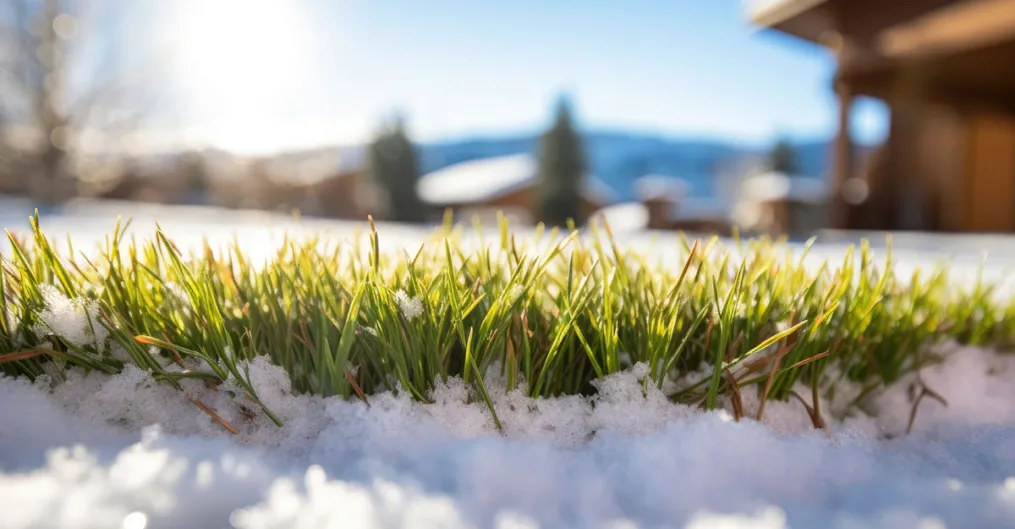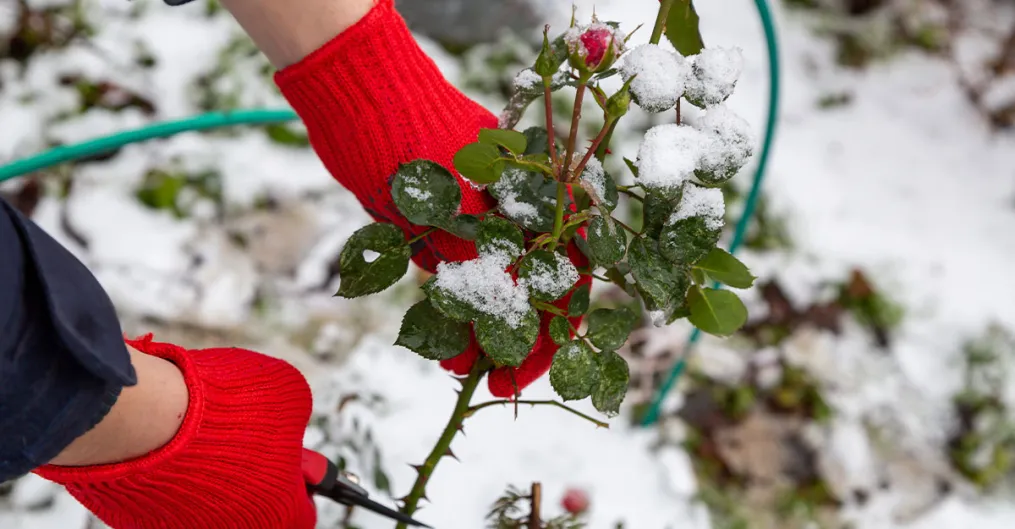While winter might signal a break from the usual lawn maintenance of mowing and watering, the grass isn’t being idle. It’s quietly preparing for the next growth cycle behind the blanket of snow that covers it during the winter. Now is a critical time for individuals who are serious about lawn maintenance since decisions made in the winter significantly impact the health and appearance of your lawn in the spring.
This guide explores the specific requirements that your grass has for the winter and proactive ways to shield it from the damaging effects of the cold. It provides essential lawn care ideas for December and January. These pointers can help you have healthy, lush grass in the spring, improving your house’s curb appeal.
Section 1: Understanding Lawn Maintenance in Winter
Winter transforms your lawn into a inactive environment, something which is quite different to the lively growth of spring and summer. During these colder months, your grass slows down its growth and conserves energy. This inactivity is a natural defense mechanism against the harsh winter conditions. But just because your lawn is dormant doesn’t mean it’s invulnerable. It’s susceptible to damage from extreme cold, heavy foot traffic, and other external factors. Understanding this inaction is important to tailor your lawn maintenance practices. Adjust your approach to match the lawn’s reduced needs, focusing on protection and maintenance rather than growth and expansion.
Section 2: The Right Way to Deal with Snow and Ice
While a moderate snow cover can insulate the grass against extreme cold, too much snow can lead to issues like snow mold, a fungal disease that thrives in cold, moist conditions. When dealing with snow, aim to distribute it evenly across the lawn to avoid large piles that take longer to melt and can smother the grass. As for ice, the chemicals used for melting ice, like rock salt, can be harmful to your lawn. They can lead to soil compaction and nutrient imbalance. Opt for gentler alternatives like calcium chloride, which is less harmful to plants, or use sand or kitty litter for traction without the chemical damage.
Section 3: Moisture Management: Balancing Act in Winter
Proper moisture management in winter is crucial for lawn health. Over-watering can be as detrimental as under-watering. If you live in an area with winter precipitation, your lawn might not need additional watering. However, in drier climates, an occasional watering during warm spells can be beneficial. Keep an eye on drainage as well; ensure that water doesn’t pool on the lawn, as this can lead to root rot and other diseases. The goal is to maintain a balance – enough moisture to keep the roots healthy, but not so much that it causes damage.
Section 4: Winter Weeding: A Surprising Lawn Maintenance Necessity
Weeds don’t take a break just because it’s winter. In fact, some, like chickweed and henbit, can thrive in cooler temperatures. These winter weeds can be a nuisance, as they compete with your grass for limited resources. Regularly inspecting your lawn for these unwelcome guests and removing them promptly can save you a lot of effort come spring. Hand-pulling is often effective, but for larger infestations, consider an appropriate herbicide. Remember, always choose a product that is safe for your type of grass and the environment.
Section 5: Frosty Mornings and Your Grass

On frosty mornings, your lawn becomes a delicate carpet of ice crystals. Walking on a frosted lawn can damage the grass, breaking the frozen blades and leading to unsightly brown patches. It’s best to keep off the lawn until the frost has melted. If you notice areas that seem to be struggling due to frost damage, plan to give them extra care in the spring, such as reseeding or applying a gentle fertilizer to encourage recovery.
Section 6: Fertilization and Soil Health in the Cold
As mentioned, the grass’s roots are still active in the winter even though they aren’t growing, so late fall or early winter is an excellent time for a final feed. A potassium-rich fertilizer can help fortify the roots and prepare your lawn for spring. Testing your soil is best done in the winter as well. You can ensure that your grass is growing in a healthy, nutrient-rich environment by making the appropriate modifications based on your soil’s pH and nutrient levels.
Section 7: Winter Pruning and Plant Care
The care of your lawn in winter extends to the trees and shrubs that share its space. Winter pruning can help prevent diseases and encourage healthy growth in the spring. It’s the ideal time to remove dead or diseased branches and to shape your plants for the next growing season. Additionally, protecting younger trees or those with thin bark from frost and sun scald can prevent damage and ensure they continue to enhance your lawn’s ecosystem.
Section 8: Gearing Up for Spring – Early Preparations
While your lawn rests in winter, you can get a head start on your spring lawn maintenance plan. Consider what tasks will need to be done as soon as the weather warms, such as reseeding bare patches, planning for aeration to improve soil structure, or applying a pre-emergent herbicide to prevent spring weeds. This proactive approach ensures that when spring arrives, you’re ready to help your lawn transition smoothly out of winter dormancy.
Section 9: Sustainable Winter Lawn Maintenance Practices
Sustainability should be a key consideration in your winter lawn care routine. Using organic fertilizers, opting for manual weeding, and avoiding harmful chemicals are steps that not only benefit your lawn but also contribute to a healthier ecosystem. These practices help maintain a natural balance in your yard, supporting not just the grass, but also the beneficial insects and wildlife that contribute to your lawn’s overall health and vitality.

Lawn maintenance during the winter season is similar to tending to a promise: the promise of rebirth and revitalization that comes with the arrival of spring. You’re doing more than just protecting your lawn when you take on lawn care duties; you’re actively getting it ready for a season of vibrant growth and stunning beauty. More than just a patch of grass, your lawn is a living, breathing component of your house’s environment and a work of art that reflects the love and care you give it. It will be lush, healthy, and prepared to welcome the warmer, sunnier days ahead.
Now that you’re equipped with these essential winter lawn maintenance tips, it’s time to put them into action! Wear your winter coat, grab your gardening tools, and give your lawn the care it deserves this winter. And remember, lawn care is an ongoing conversation – we’d love to hear your stories, tips, or questions. Share your lawn maintenance experiences in the comments, or reach out for personalized advice. For more hands-on assistance, give us a call at Doug Greenwood Landscaping we will talk about how you can improve your outdoor scenery before the weather turns warm again.

